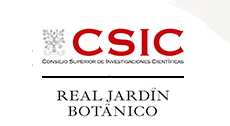Scientific Area
Abstract Detail
Nº613/913 - Eco-physiological features of C3-C4 Moricandia african clade: a range of within-individual phenotypic plasticities
Format: ORAL
Authors
Cristina Armas1, Adela Gonzlez-Megas2, Francisco Perfectti2, Luis Navarro3, Eduardo Narbona4, Jos M. Gmez1,2
Affiliations
1. Estación Experimental de Zonas Áridas (EEZA-CSIC), Almería, Spain
2. Universidad de Granada, Granada, Spain
3. Universidad de Vigo, Vigo, Spain
4. Universidad Pablo de Olavide, Sevilla, Spain
Abstract
The majority of plant species on Earth employ C3 photosynthesis. However, more than a quarter of the assimilated CO2 by C3 species can be lost later to photorespiration, which is exacerbated in hot and arid conditions. In response, some plant lineages have evolved carbon concentrating mechanisms to improve net carbon assimilation, either re-assimilating the CO2 released by photorespiration (the uncommon C3C4 intermediates) or directly inhibiting it (C4 species). There are no C4 species in the Brassicaceae family, but it contains some C3C4 species, predominantly in the African clade of the genus Moricandia. Most C3C4 Moricandia congeners inhabit the arid and semiarid areas of the Western Mediterranean, where they are able to grow and bloom not only in spring but also during the hot, bright and dry summer, displaying phenotypic plasticity in different functional traits. Phenotypic plasticity, the ability of a genotype to produce alternative phenotypes when exposed to different environments, is pivotal to understand the ecology and evolution of most organism and has important implications for understanding how organisms can rapidly cope with changing environments. Here we show the occurrence of phenotypic plasticity in key traits of the photosynthetic machinery of different Moricandia C3-C4 species and compare it to other C3 congeners. C3-C4 congeners exhibit differences in the magnitude of the plastic responses for key leaf traits. Changes across environments in the abundance and size of stomata, vein density, disposition of chloroplasts across leaf cells, and in their CO2 compensation points, all point to different abilities to capture, concentrate and re-assimilate the CO2 released by photorespiration. Compared to C3 species, C3-C4 congeners show improved net carbon assimilation in high photorespiration environments, allowing them to extend their productivity, flowering and production of viable seeds during the harsh season, when most other co-occurring C3 plants are inactive and dormant.




